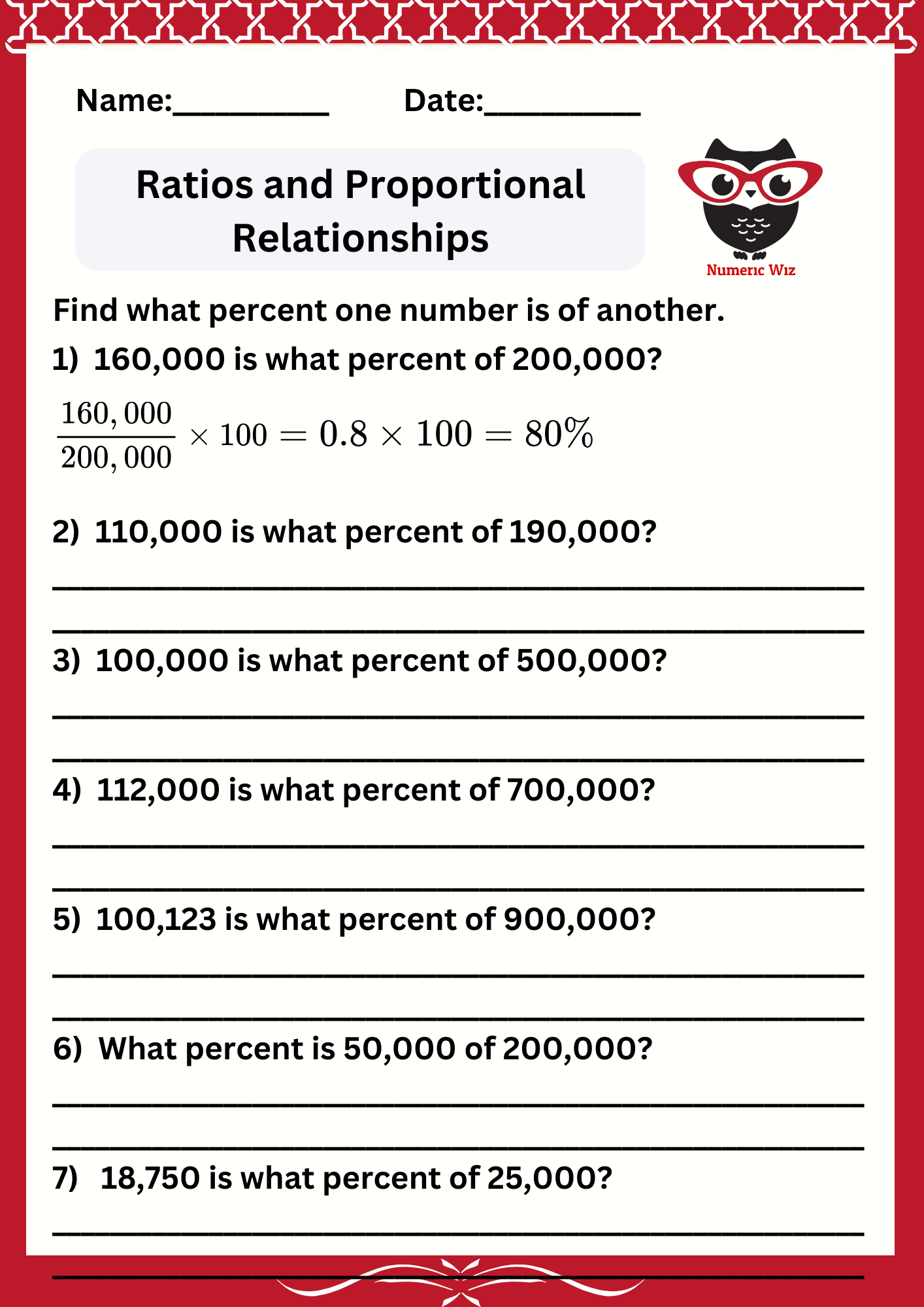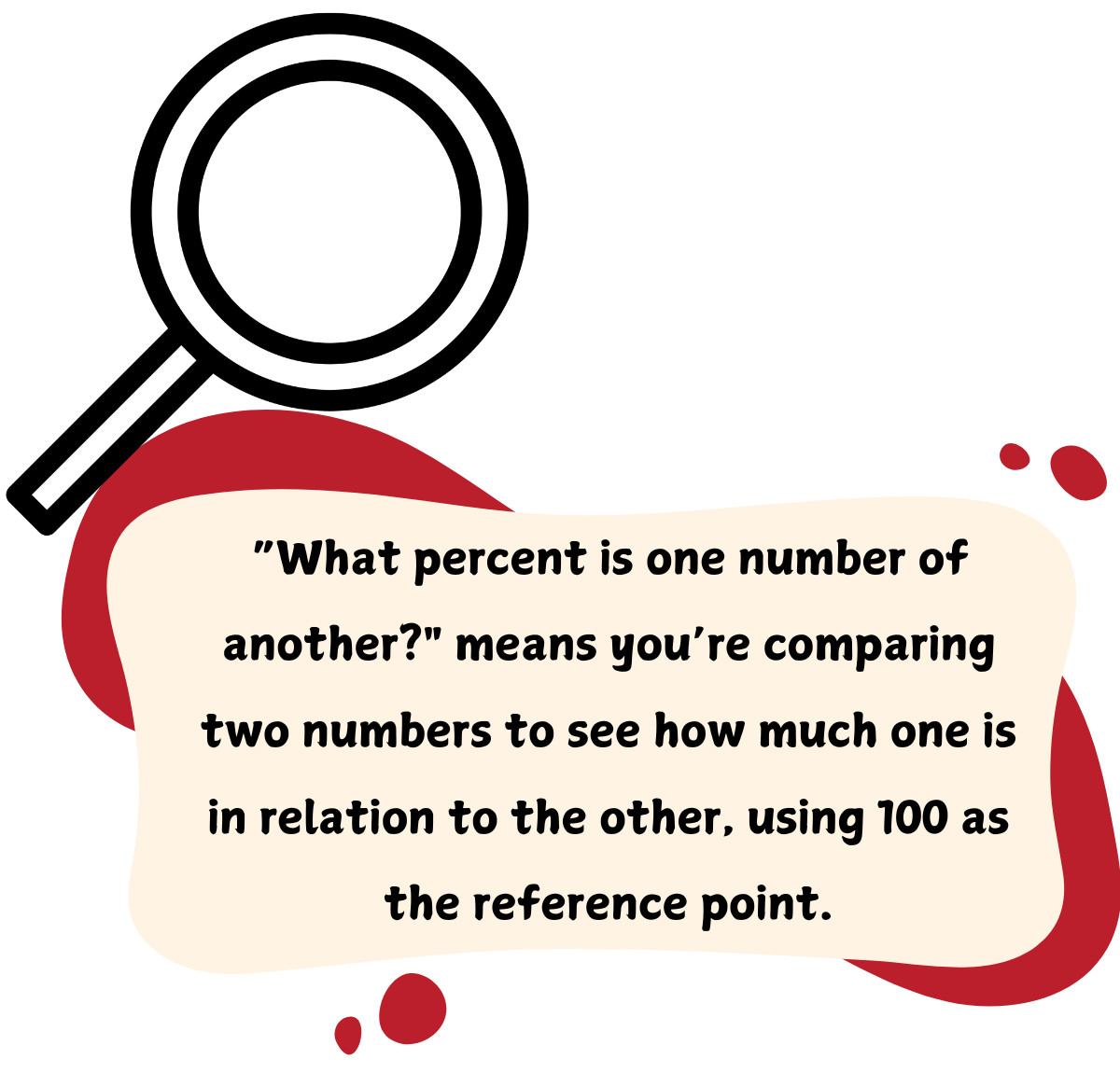
means figuring out how much one number compares to another in terms of 100.

For example, if you want to find what percent 20 is of 50, you’re asking: "Out of 50, how many parts out of 100 does 20 represent?"
Take the part (smaller number or value you're comparing).Quick Trick to Remember:
Think of the formula like this:
(Small number ÷ Big number) × 100 = Percent
Divide it by the whole (the bigger number or total amount). Understanding percentages is very useful in daily life. Here are some everyday situations where you might need to find what percent one number is of another:
Multiply the result by 100 to convert it to a percentage.
Example 1:
What percent is 25 of 200?
Step 1: Divide → 25 ÷ 200 = 0.125
Step 2: Multiply by 100 → 0.125 × 100 = 12.5%
Answer: 25 is 12.5% of 200.
Example 2:
What percent is 8 of 40?
Step 1: Divide → 8 ÷ 40 = 0.2
Step 2: Multiply by 100 → 0.2 × 100 = 20%
Answer: 8 is 20% of 40.
Example 3:
What percent is 15 of 60?
Step 1: Divide → 15 ÷ 60 = 0.25
Step 2: Multiply by 100 → 0.25 × 100 = 25%
Answer: 8 is 25% of 60
 Shopping: If you bought an item for $30, and its original price was $50, you can find what percent $30 is of $50 to know how much you paid compared to the original.
Shopping: If you bought an item for $30, and its original price was $50, you can find what percent $30 is of $50 to know how much you paid compared to the original.
 Test Scores: If you answered 18 questions correctly out of 25, finding what percent 18 is of 25 helps you know your performance.
Test Scores: If you answered 18 questions correctly out of 25, finding what percent 18 is of 25 helps you know your performance.
 Savings: If you saved $200 out of your $1000 goal, you can find what percent $200 is of $1000 to track your progress.
Savings: If you saved $200 out of your $1000 goal, you can find what percent $200 is of $1000 to track your progress.
 Attendance: If 45 students are present out of 50, finding what percent 45 is of 50 shows the attendance rate.
Attendance: If 45 students are present out of 50, finding what percent 45 is of 50 shows the attendance rate.
Let's work on percentages together and see how you're doing!
For a limited time
